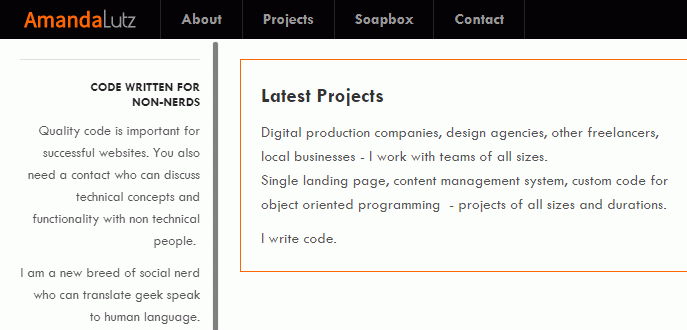Content Management System
At it's core, websites are made up of 2 parts: the content (including text and images) and the layout. To edit content on flat, non-dynamic sites clients would have access to all the code of the page. Forget to close a single div tag and everything could break.
Content management systems separate content and layouts by using databases and templates. The content - editable via a backend admin site - is saved in a database. The layout - with all the html and php code - builds the pages based on the design and pulls in the content.
- Boltcms
- Bootstrap
- CMS Made Simple
- CodeIgniter
- Content Management System
- Craft CMS
- Craft CMS Shopify plugin
- ExpressionEngine
- Facebook App
- Flash
- Google Maps API
- GraphQL
- GSAP
- html/css
- JavaScript
- Joomla!
- jQuery
- json/xml
- Maintenance
- Mal's e-commerce
- Mobile Site
- PayPal API
- PHP
- React
- RESTful API
- Skilljar
- Twitter API
- Vue.js
- WordPress
- YouTube API
- Zen Cart
- +

In Development - The Movie Site
Currently in post production, an indy movie required a site to both promote and be featured in the film.
The Waterfront BIA, Toronto
The Toronto Waterfront Business Improvement Area needed a new site to showcase local businesses and help visitors get around.
View Case Study
My Own Site
Look familiar? I like CraftCMS so much I'm using it for my own site.
LMK Lawyers
This law firm uses their site to inform class action participants of case updates.
Visit SiteCanada Media Fund 2013-2014 Annual Report
Financial overview of support to a total of 510 productions.
Visit SiteCMF Trends
The Canada Media Fund publishes CMF Trends, an analysis blog that helps readers better understand the ongoing changes happening in the world of digital media and technologies.
Visit SiteMichael Geist
A blog for Dr. Michael Geist, a law professor at the University of Ottawa. His original site was Joomla and 1000's of posts and comments had to be imported.
Visit SiteTODAY Show RSVP
Online rsvp form for TODAY Show producers to track the number of guests expected for the live broadcast.
View Case Study
Colorfield
Colorfield is an international digital design and development company.

AT&T Transforming Business
AT&T demonstrates how their products can help small business owners.
© 2025 - Amanda Lutz * Web Developer







